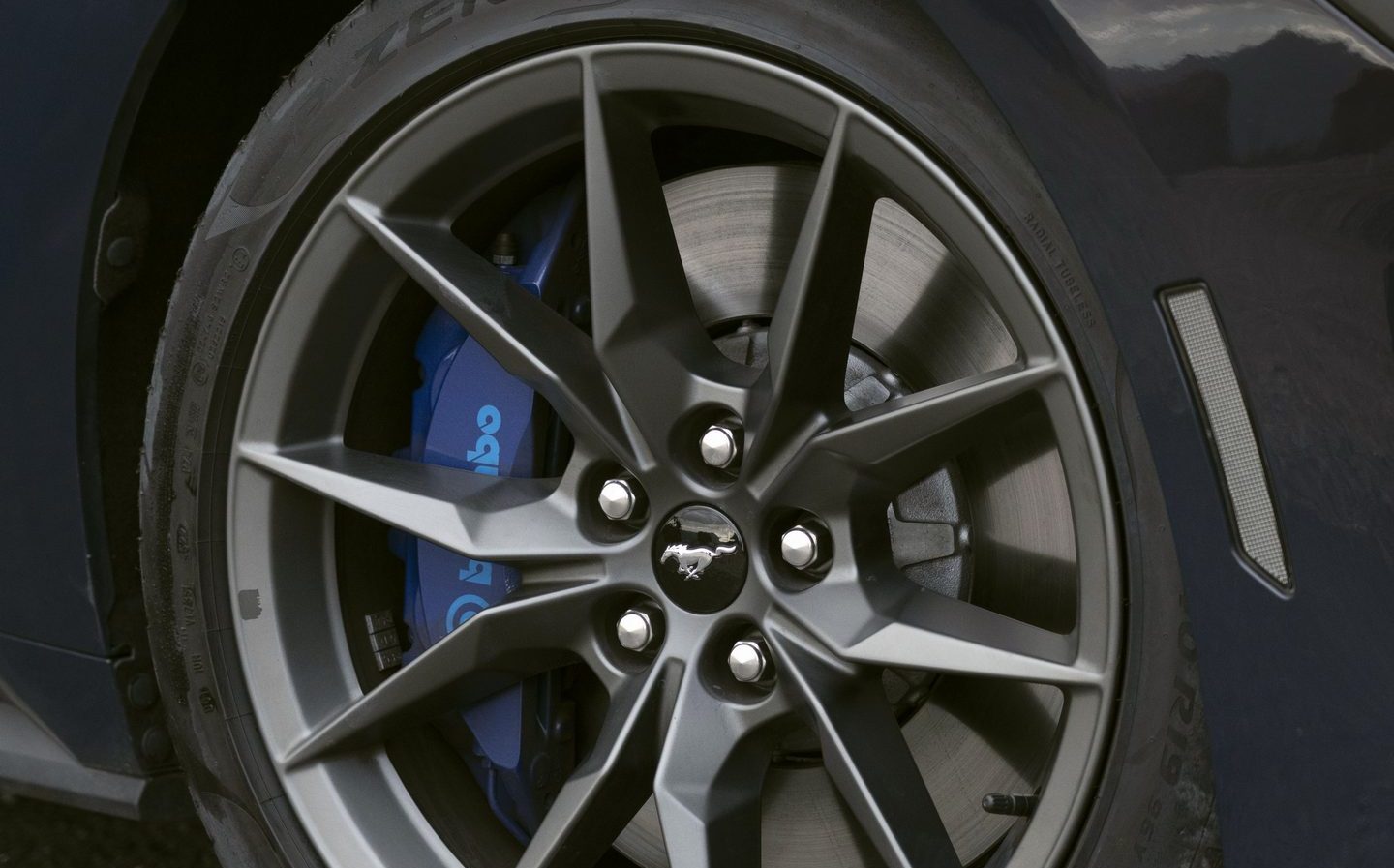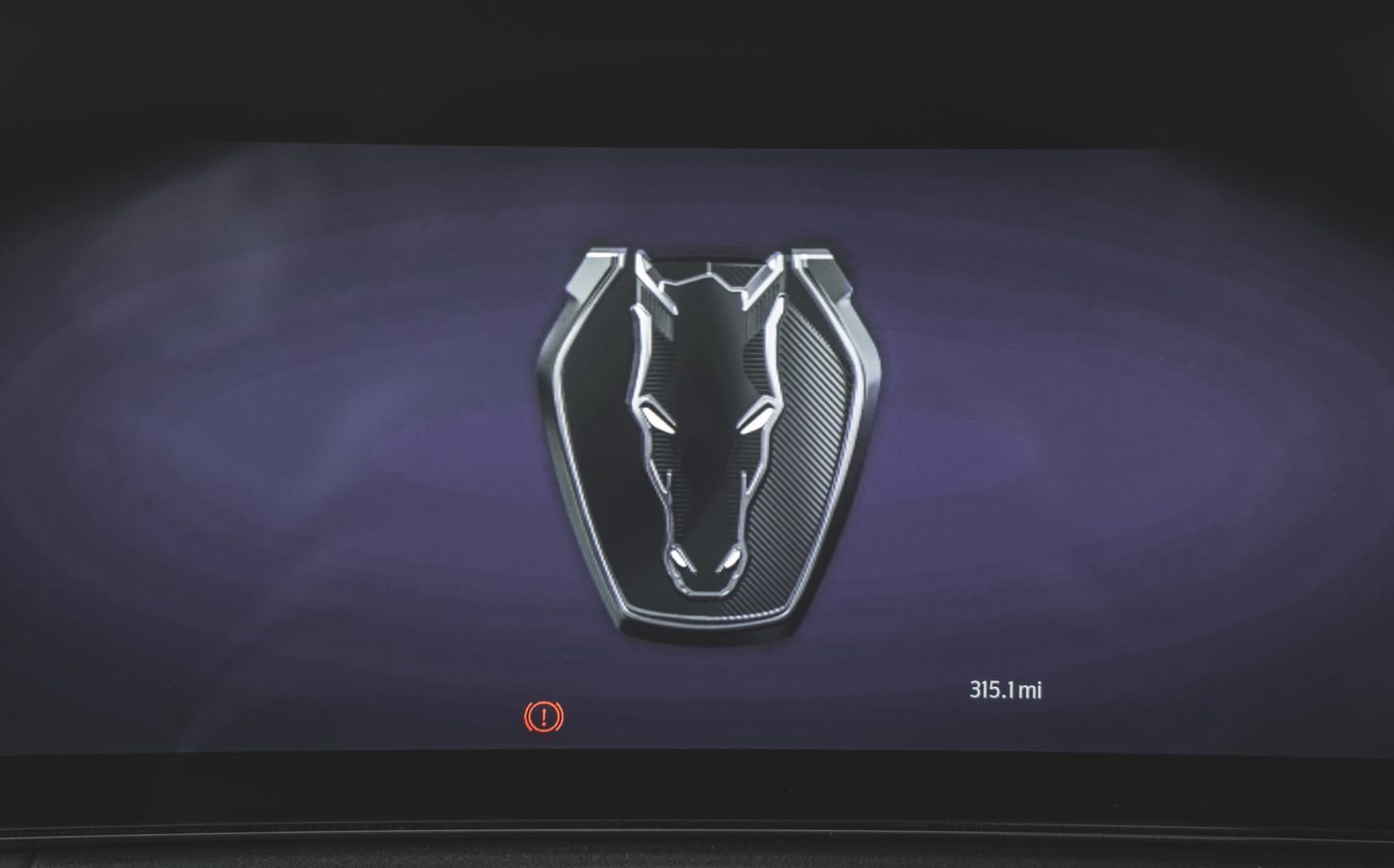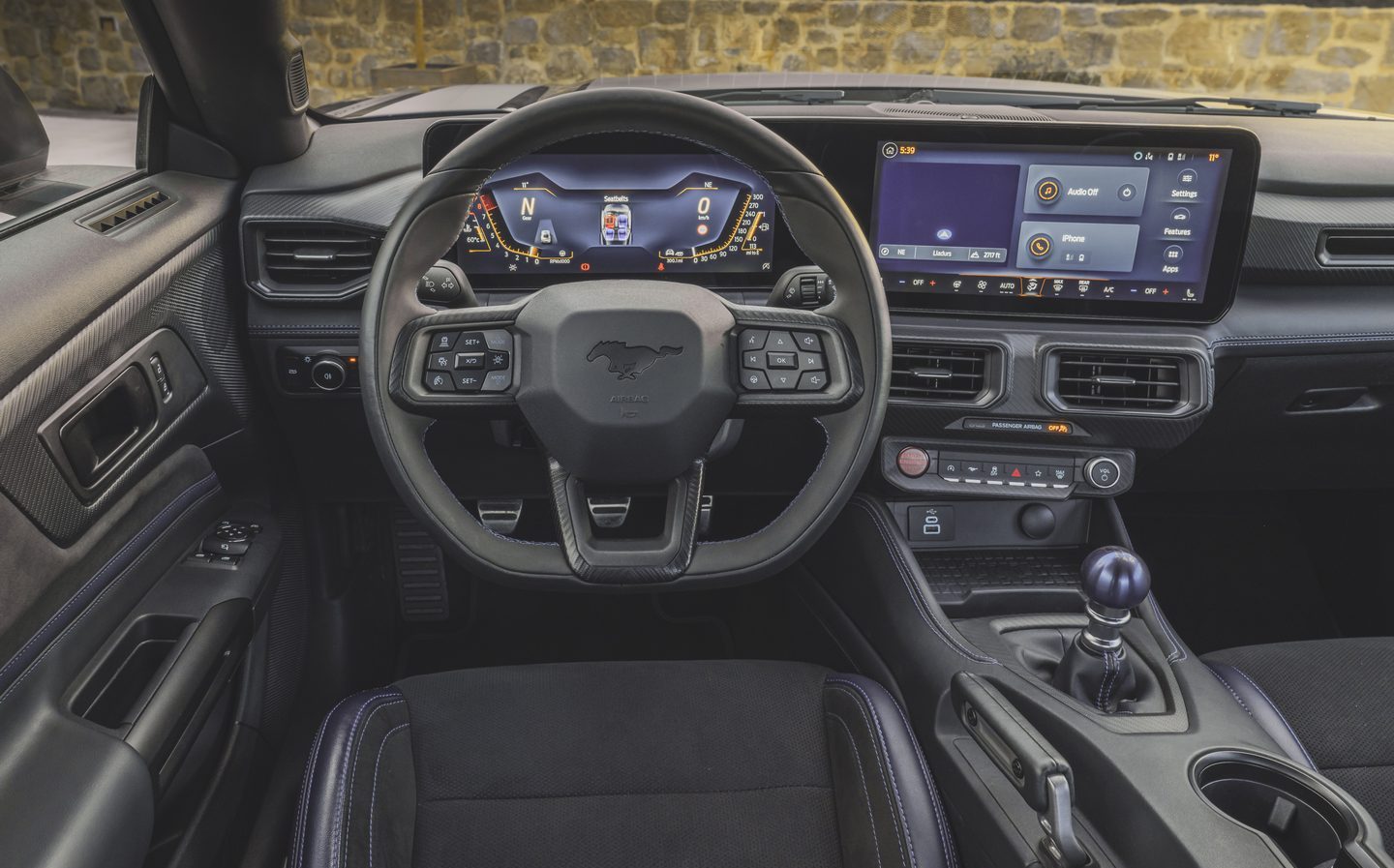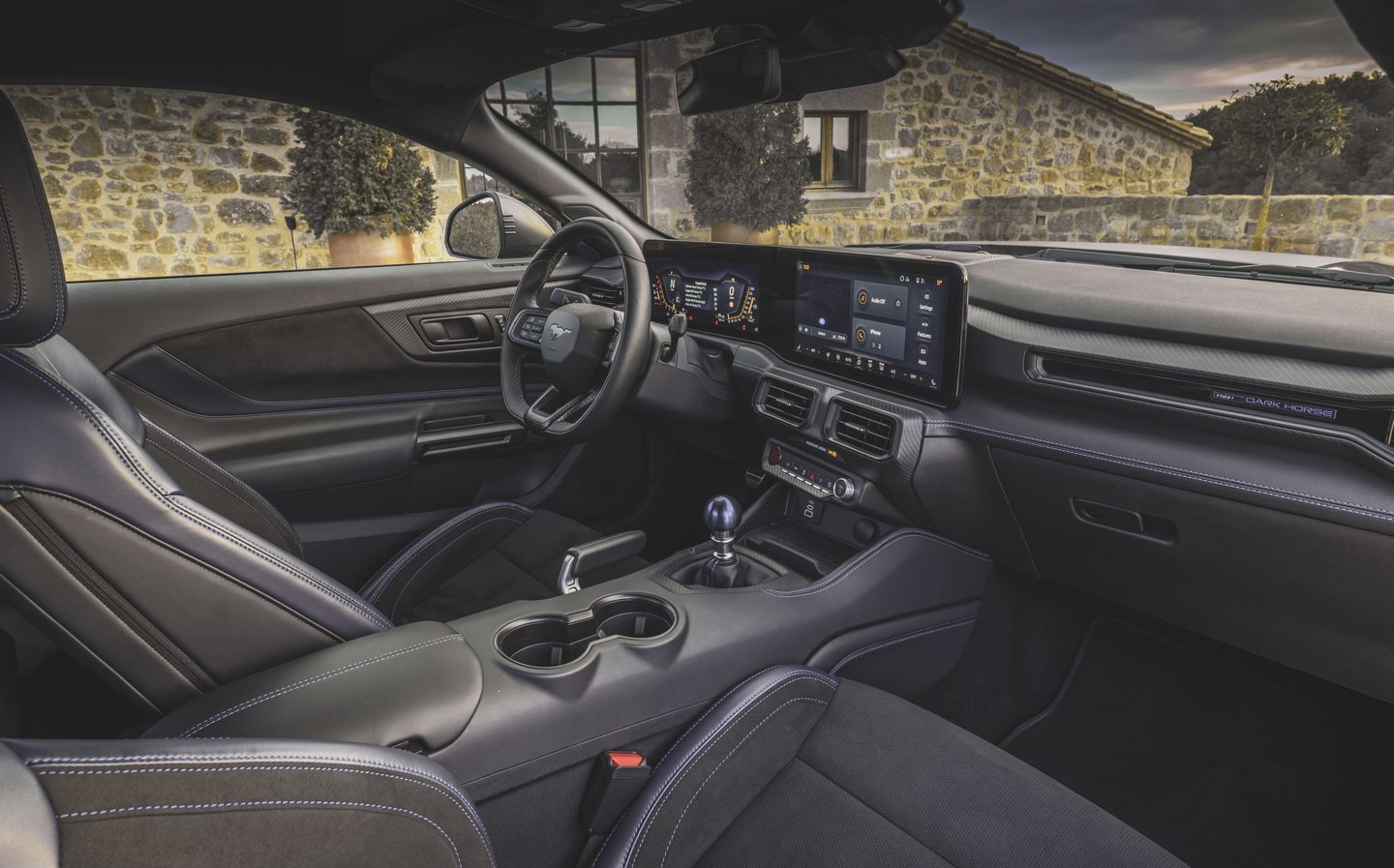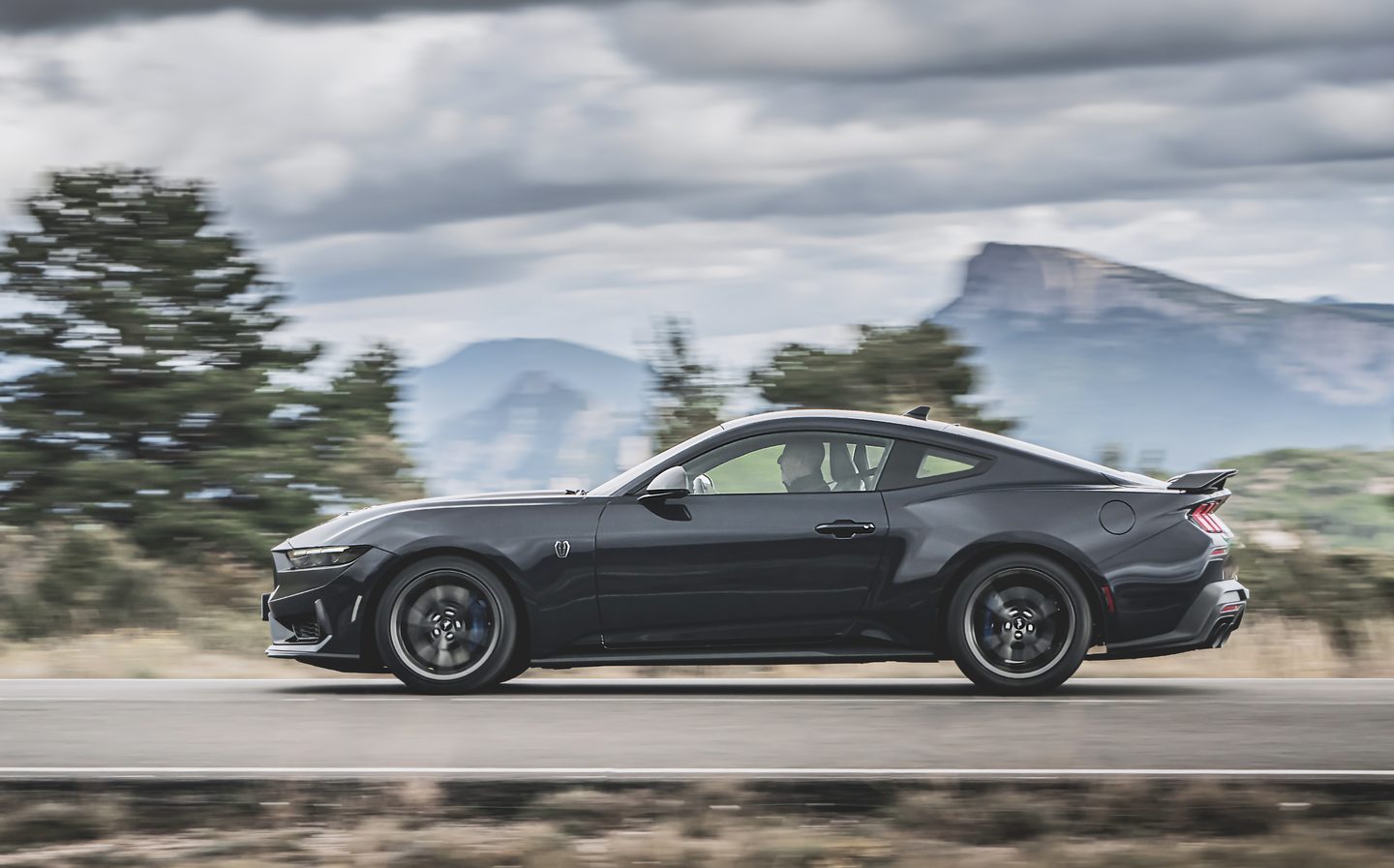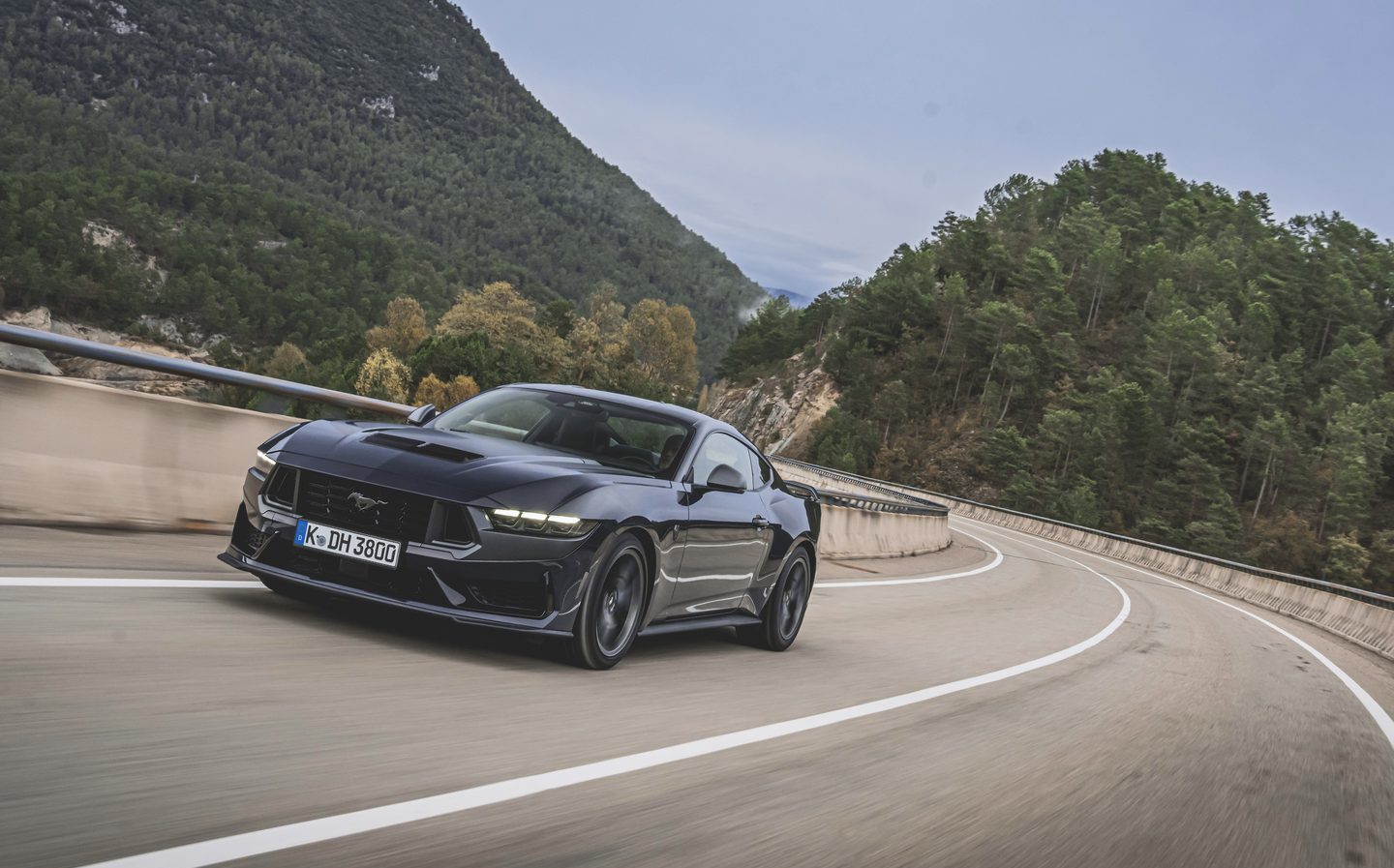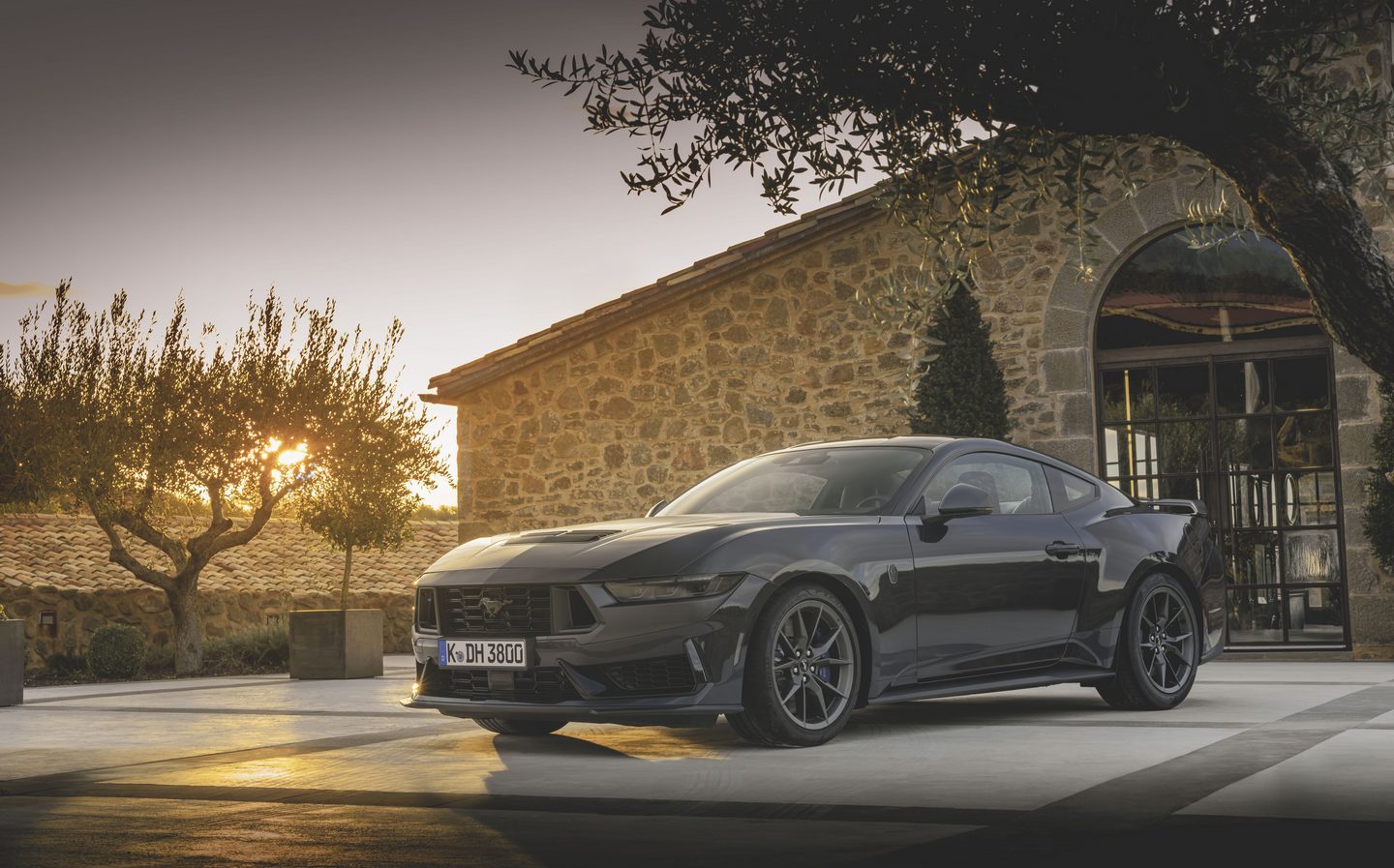Ford Mustang Dark Horse 2024 review: The pony car's evil twin is no rank outsider
Horses for courses
A dark horse: someone or something that is little known but has had recent success or might be about to achieve great success. The inferred subtext with the term is that expectations are low… but maybe there’s an outside chance of greatness.
You can kind of see why Ford thought it would be a good name for this extra-potent V8-powered version of its new, seventh-generation Mustang GT, given the long-held equestrian iconography so intrinsically linked with its famous “pony car”.
But does it suggest the utmost confidence in the model from its maker? Is there the merest whiff of damning this flagship Mustang with the faintest of praise by calling it Dark Horse? It is worth noting that it’s not the ultimate Mustang now available for the road; that title goes to the Mustang GTD (not a diesel but a supercharged 5.2L carbon-clad version with up to 800bhp).
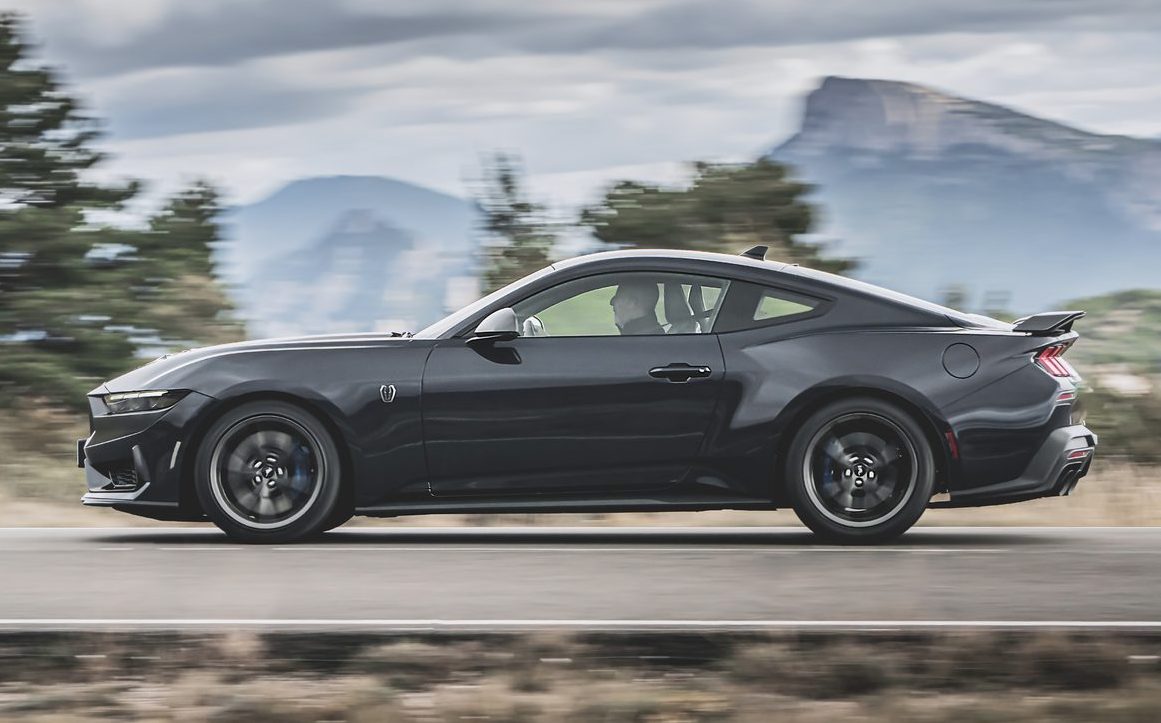
And there’s some background to the carmaker’s apparent cautiousness, especially this side of the Pond. Ford’s icon is, quite rightly, given automotive legend status these days but in the 60 years since its launch (Happy Birthday btw, Mustang) hasn’t quite clicked with European sensibilities. A bit too shouty. A bit too rough around the edges. A bit too, well… American.
Mind you, that might have had something to do with which side the steering wheel was located: we didn’t get a right-hand drive version until the previous model arrived in 2015. Therefore, while there might well be six decades’ worth of Mustang heritage and goodwill in the locker for US audiences to draw upon, much of what we European car enthusiasts know about it will come from references in music and movies more than anything.
However, it continues to offer something no other manufacturer does. And we’re not just talking about links to Steve McQueen and Eleanor, the Mustang GT500 from Gone In 60 Seconds.
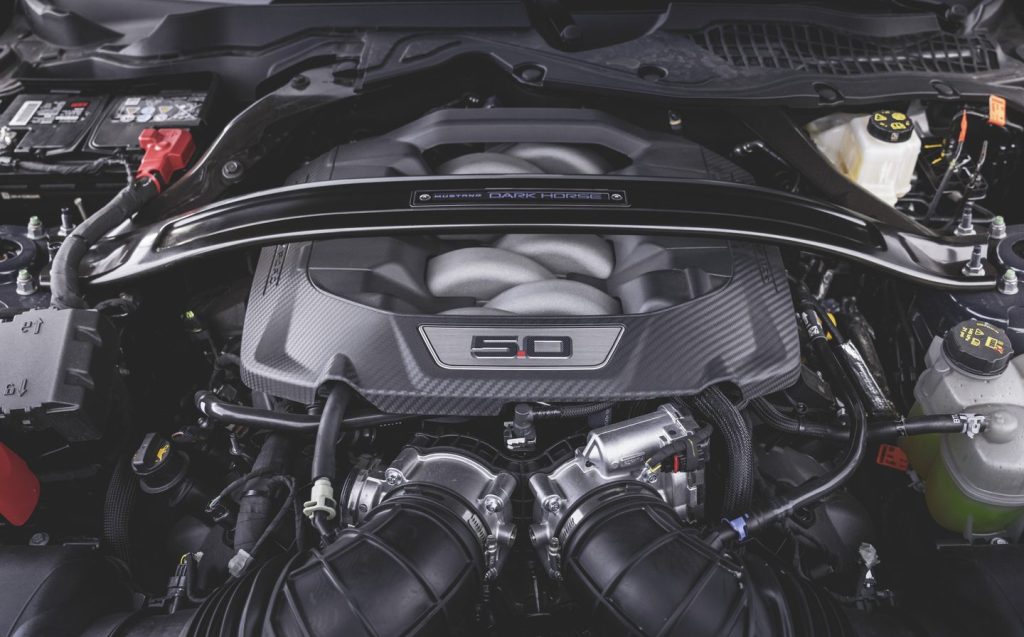
No, instead this is the only new car in 2024 which can be specified with rear-wheel-drive, a naturally aspirated 5-litre V8 petrol engine and a six-speed H-pattern manual gearbox.
Of course, that very combination might put people off. Where is the mild-hybrid fuel-saving technology, they may cry. Can it at any point shut off half of its cylinders to reduce emissions? Where is the ecological goodness in such a machine?
They’re all fair points but Ford is working on electrified cars, too, of course. Alongside hybrids and plug-in hybrids presently offered in its showrooms, there’s a zero-emission version of its top-selling Puma crossover on the way, the company has fully electrified its Transit Custom commercial vehicle, and naturally there’s already an electric interpretation of the Mustang nameplate on sale in the form of the Mach-E SUV.
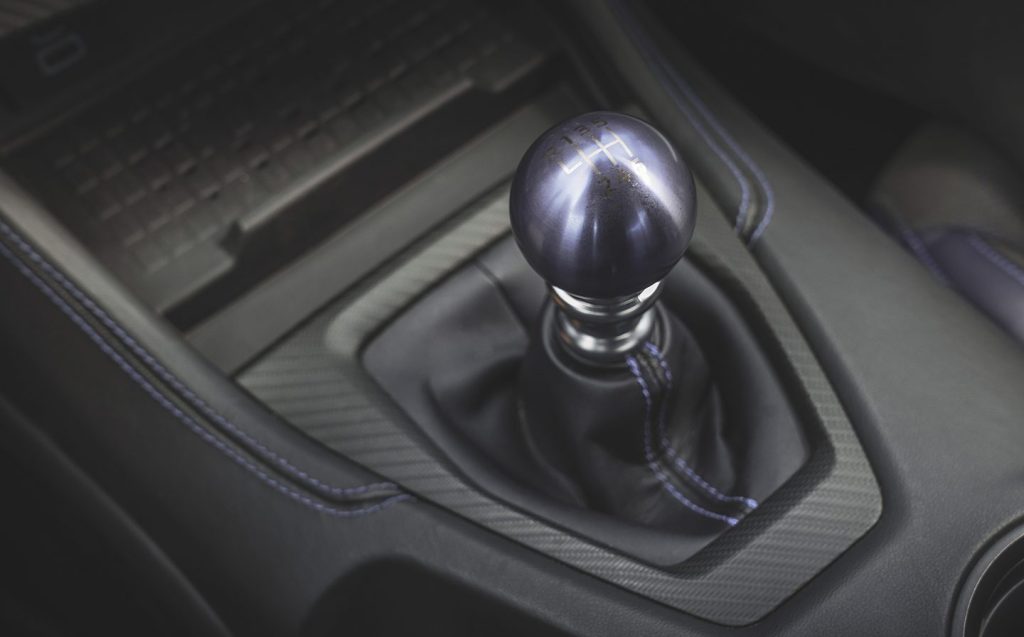
So, Ford can afford to still offer the “proper” Mustang as a pure internal-combustion halo model in 2024 and beyond. And I, for one, am most glad this continues to be the case.
In the simplest terms, Ford has taken the preceding model of Mustang and sharpened every aspect of it. Nowhere is this more evident than outside and in the car, with the striking exterior styling a real step on from the version it supersedes.
There are Mustang hallmarks, of course, such as the triple-blade rear lights, a signature echoed in the front daytime running lamps and the associated indicators. If you peruse its body carefully, you’ll find next to zero Blue Oval logos anywhere on it; a deliberate tactic to subliminally reinforce the idea that the Mustang is a step apart from the rest of the manufacturer’s line-up.
And there are still the flared-out rear haunches, the long bonnet and that sweeping roofline leading down elegantly into the trunk… sorry, boot.
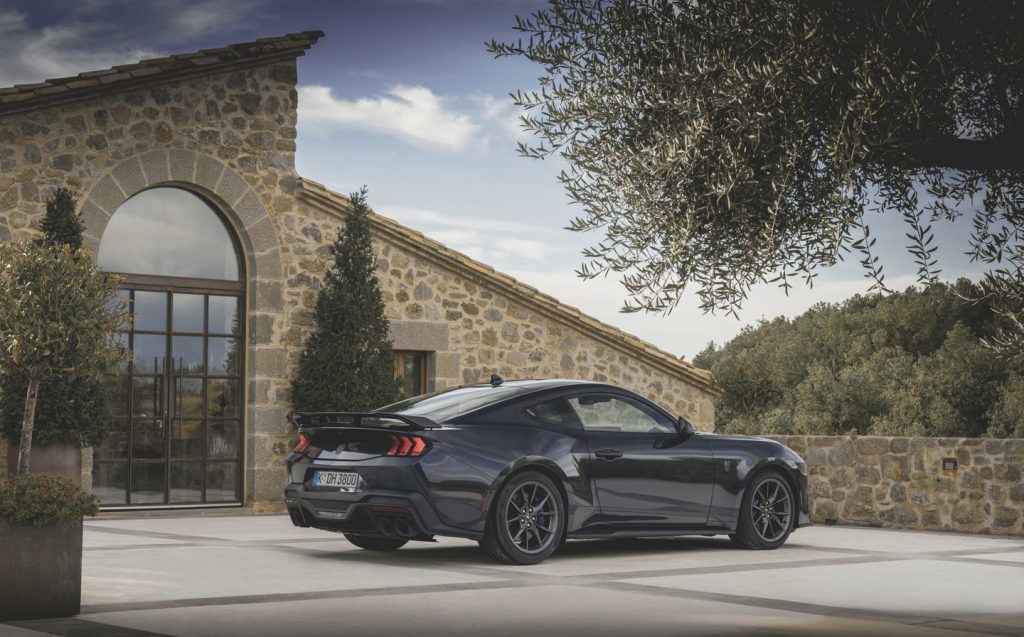
It looks magnificent, the mean and moody detailing of the track-focused Dark Horse really suiting it as well, but for the interior Ford has listened to customer feedback and significantly improved the technology levels in the Mustang’s cabin.
This has resulted in the almost complete abandonment of the Mustang’s former dual-cowled dashboard in favour of a widescreen array, designed to bring the model into the 21st century and attract a younger clientele to the car’s customer base.
Chiefly, there’s a 12.4in instrument cluster sitting alongside a 13.2in infotainment screen. This slight size mismatch is evident in the bottom of the frame surrounding both, which drops slightly alongside the steering wheel, but the smaller cluster is necessary so the driver can see all information on it through the gaps in the wheel.
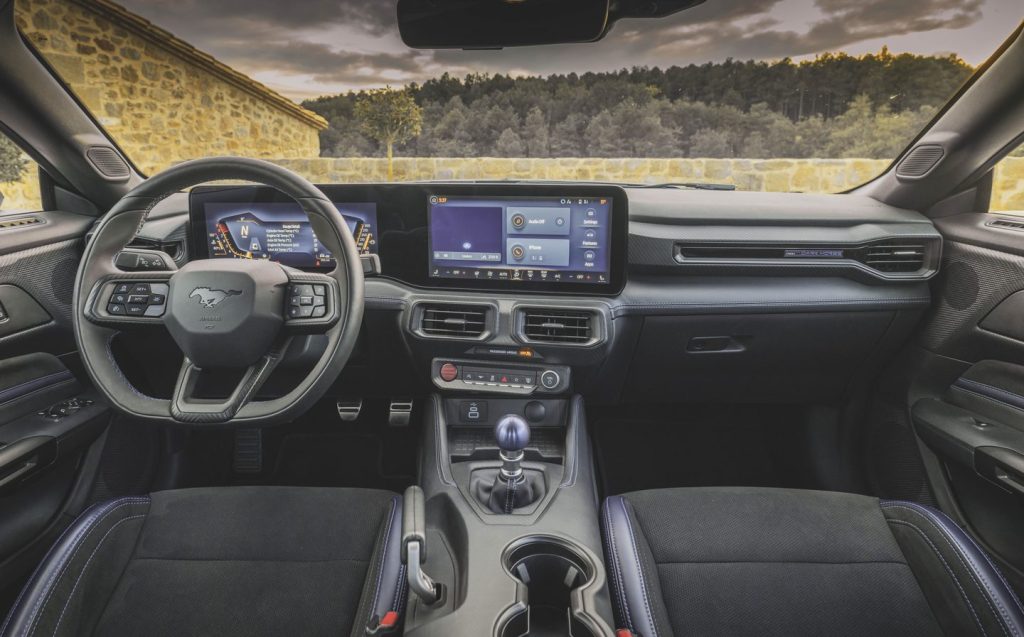
If this all sounds too high-tech for you then you might be pleased to know there’s a setting in the menus to give the 2024 Mustang’s digital display the retro-look dials of the third-generation “Fox body” Pony Car, which was built from 1979 until 1993. A welcome, if somewhat nostalgic addition to the ultra-modern computing power of the new car, we’re sure you’ll agree. Mini offers a similarly-retro display option with its new models.
The material quality has improved from the old car’s cabin, although if you go hunting high and low for them, you might find one or two plastics in the Ford you’d be unlikely to see in a similar level of Audi or BMW, for instance.
Don’t expect massive practicality, either. The boot’s a good size but the rear seats are occasional-use items only — the Mustang is definitely a 2+2, rather than a full four-seater — and we can tell you from personal experience [Matt owns a previous-gen Mustang – Ed.] that, in right-hand-drive versions the cupholders on the transmission tunnel are in an absolutely daft position if you opt for the manual gearbox. Any coffee receptacle you put in there will be constantly fouling your elbow and forearm as you shift gear.
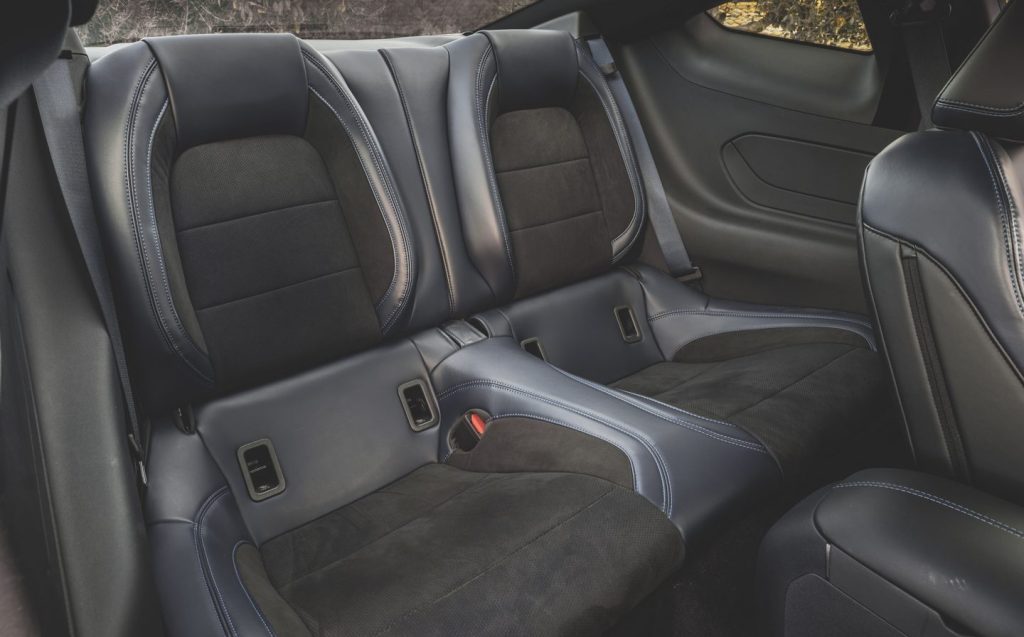
In terms of the Mustang range, there is but the one engine: the Coyote 5-litre V8, revised with dual air intakes where previously it had a solitary item, and given a moderately uprated output in the Dark Horse.
There are two main models spun from this one V8, the 440bhp GT and the 447bhp Dark Horse, both of which can be specified with the six-speed manual or a ten-speed auto, the latter of which shifts fine but has about four cogs too many than it needs.
There are also two body styles available, the coupé (known as the Fastback in most Mustang circles) and the soft-top convertible, but that’s only for the GT. The Dark Horse, with its track bias, is sold solely with a fixed roof.
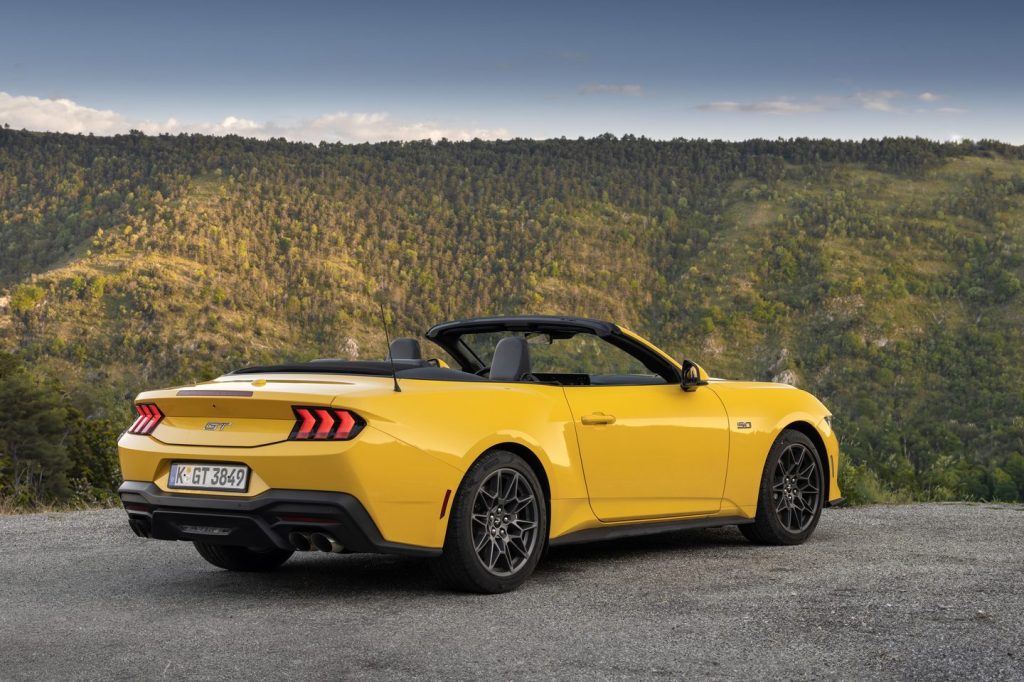
Every Mustang has enough power and torque (398lb ft on all models) to hit 0-62mph in 5.4 seconds or less, with top speeds of 155- or 163mph — the fastest being the Dark Horse auto, which is also the quickest off the mark with a 4.4-second 0-62mph sprint.
However, a few points on the power outputs. Two of the previous-generation Mustang specials, namely the Bullitt and the Mach 1, delivered 454bhp apiece, while in America, both the GT and the Dark Horse are unrestricted by emissions-satisfying petrol particulate filters, so they make 480bhp and 500bhp accordingly. Curses to Euro legislation. How many UK owners will have work done to unbridle them, I wonder.
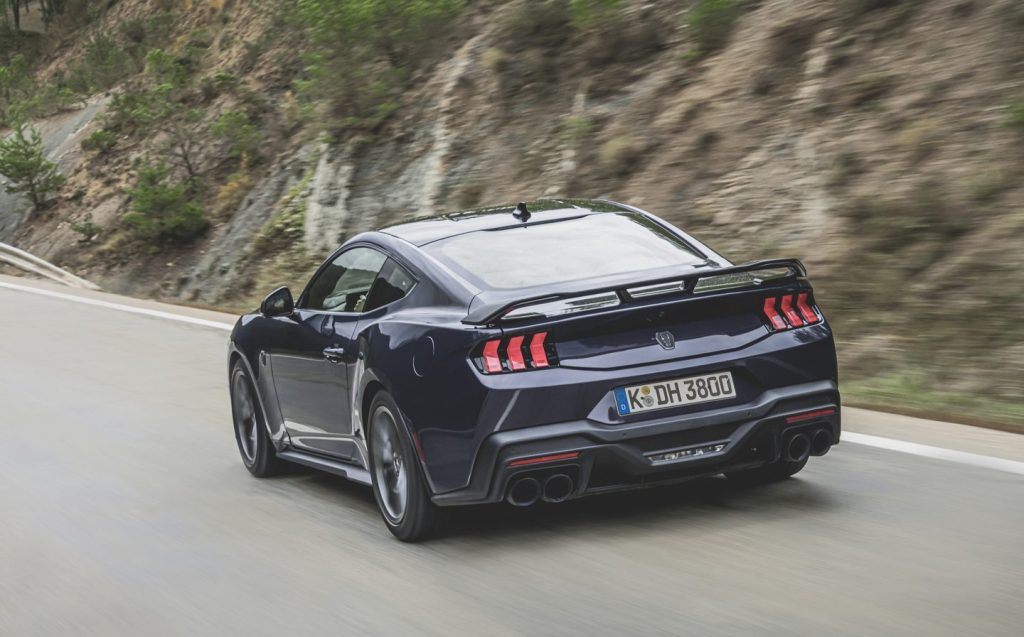
No matter: the way the Mustang performs will satisfy anyone. Especially as this is a car which sings a pure, unfiltered tune, rather than being augmented by its speakers or pretending it’s something it’s not. The glorious V8 soundtrack is even better in the Dark Horse, which has an active exhaust for the finest possible automotive noises.
The Coyote V8 also remains a masterpiece of naturally aspirated engines, because it has the low-down torque and menacing burble that you’d expect of a big-capacity American lump like this, only it will also happily rev out to 7,400rpm and more in a long, linear, crisp pull of acceleration. Mated to the manual gearbox, eliciting the speed from this powertrain is an utter delight.
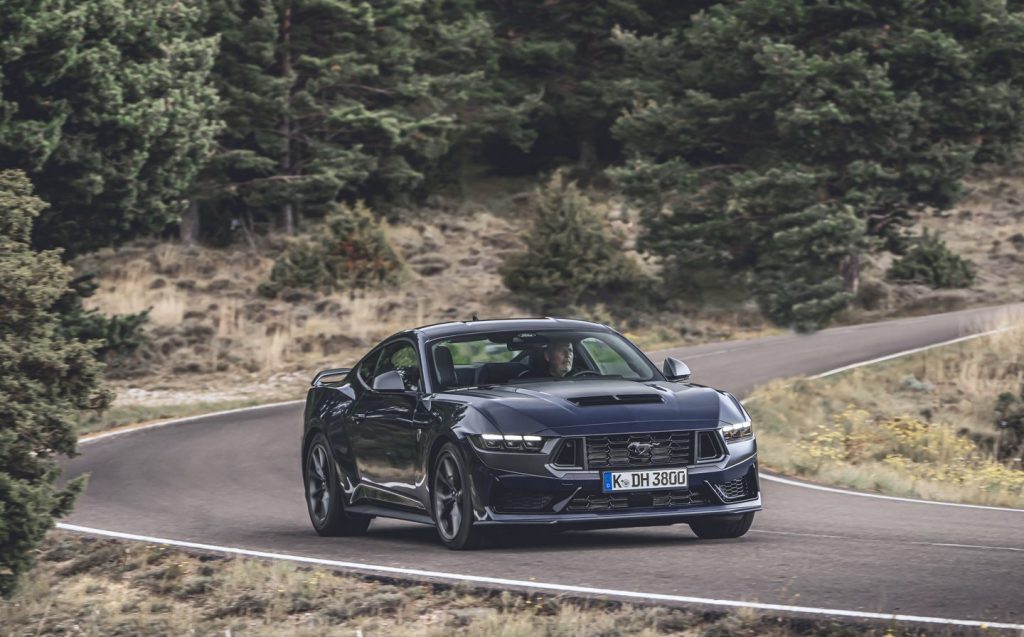
Thankfully, despite the fact that it’s a big car and fairly chunky at the kerb (it’s in excess of 1.8 tonnes in all formats), the Mustang never feels unwieldy and soft. In fact, it’s brilliant to drive. The steering is a bit light, presumably to disguise the car’s mass, but the body control is excellent and there’s a lovely feeling of balance to the chassis, redolent of the fact that it’s a rear-wheel-drive machine.
Ford plays on this boisterous nature of the Mustang, keeping in features such as a drive mode called Drag Strip (does what it says on the tin), something called Line Lock (it holds the front brakes and allows you to burn out the rear tyres, in preparation for a timed run up that aforementioned drag strip, perhaps) — and now there’s Drift Brake as well.
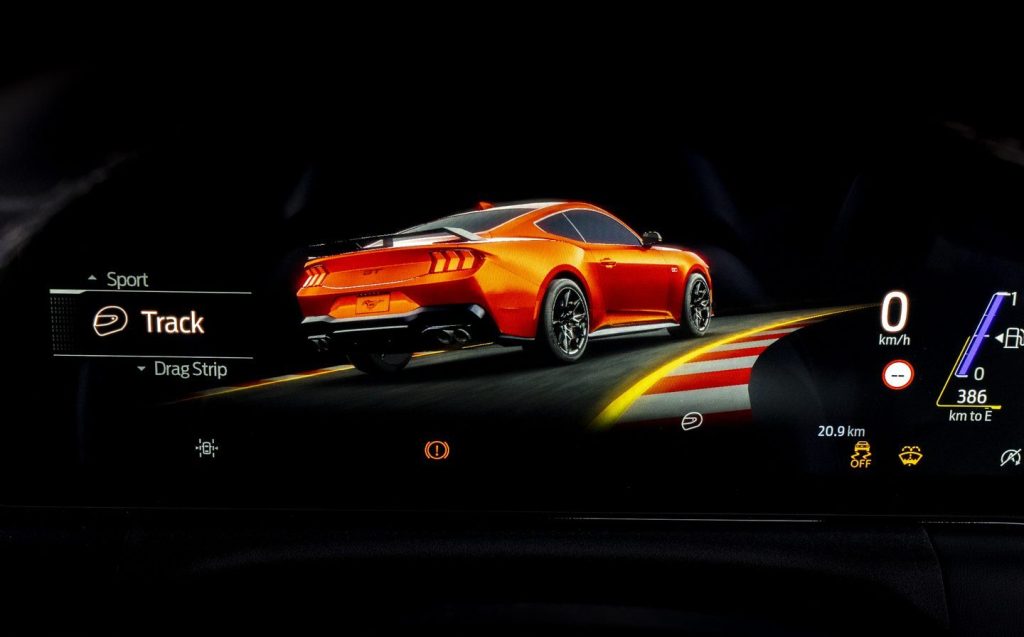
While it may look like a typical physical handbrake bar, the lever down on the Mustang’s transmission tunnel controls an electronic parking brake. This takes some time to get used to operating, but the Drift Brake setting you can pick from the screens allows you to pull up on the lever and get the car’s rear brakes to activate, which helps promote skidding at the back. Wise not to try that on the public road though.
Yet the new Mustang, especially as the Dark Horse, is not just some hairy hooligan. It’s in truth a very decent high-performance coupé, enhanced by its incredibly charismatic powertrain and the aura that only a Mustang can possess. While it’s not the sharpest thing you’ll ever drive, don’t on the other hand mistake the brawny Ford for a one-trick pony — if you’ll forgive the pun — as it can definitely hold a dynamic candle to its key European competition.
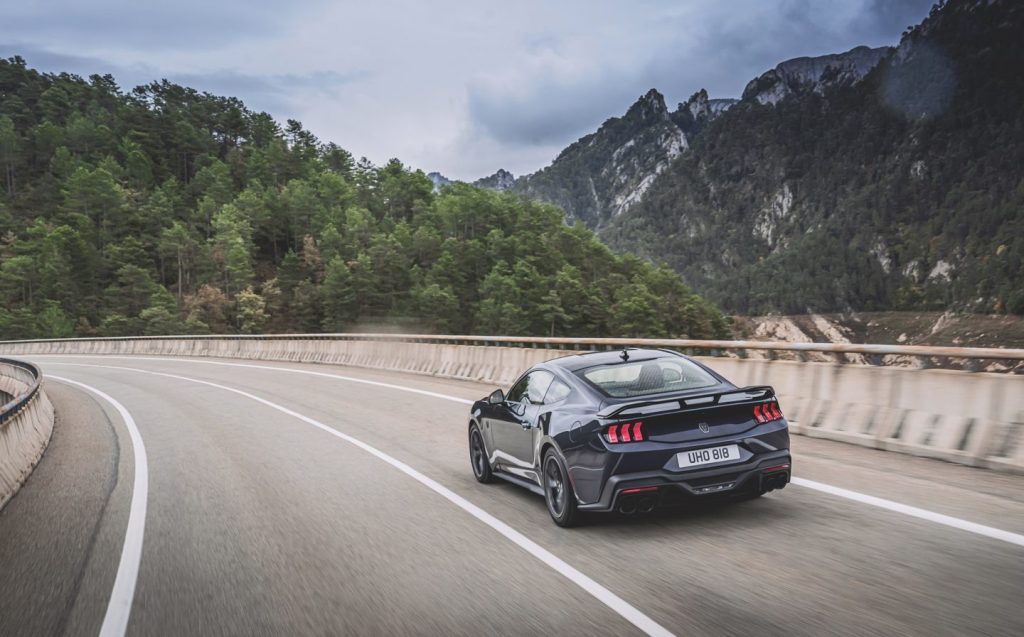
On the flip side of the coin, its 9cm-longer body, compared with the previous-generation Mustang, is more aerodynamic than ever so it cuts through the air more efficiently and, coupled with impressive levels of sound suppression plus a noise-cancellation system in the 12-speaker Bang & Olufsen audio set-up, it means the Mustang is a pretty good cruiser… with one caveat.
MagneRide adjustable dampers, an option on the GT but standard fit on the Dark Horse, are part of a clever system that mitigates the impact of potholes. It can monitor body, steering and braking inputs, and then prevent any wheel from “dropping” into a pothole and potentially getting damaged as a result.
All very fancy, but if our experience is anything to go by, it manifests in an overly firm low-speed ride quality, the one area where the Mustang’s grand tourer character is let down. It’s as if the car is trying so hard to protect its alloys from holes in the asphalt that it forgets to isolate its occupants from bumps in the road.
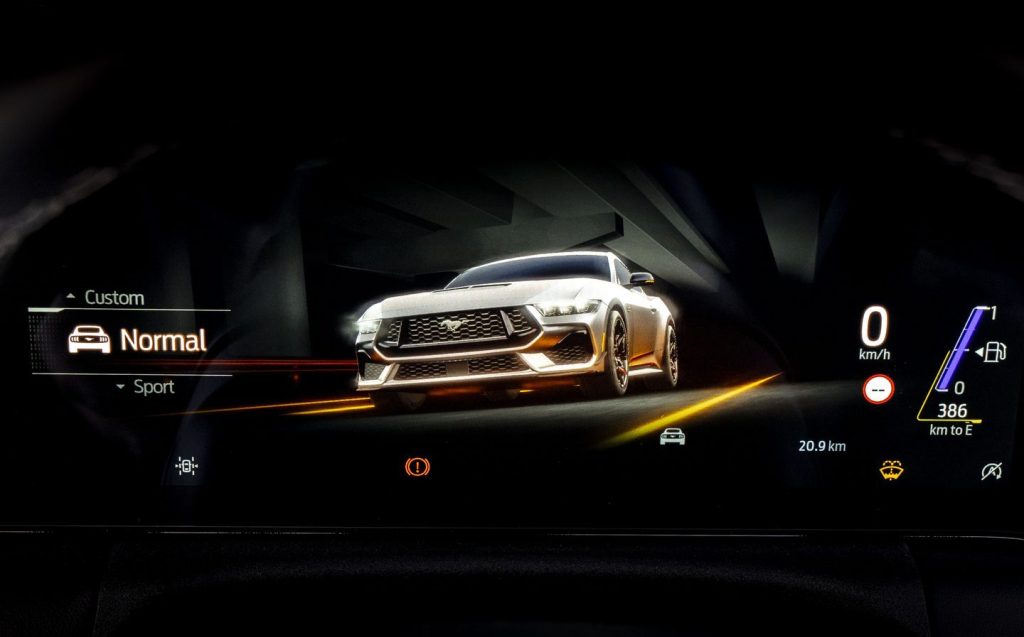
Like many a modern performance car, higher speeds and improved road surfaces help the Ford’s composure no end, but the older Mustang GT rode with more grace about town than the Dark Horse does.
Aside from that and perhaps the lack of traditional sculpture to the new model’s techy cabin, what Ford has done with the Mk7 Mustang is what it set out to do: take everything that was good about its predecessor and then quietly hone and improve it to result in a deeply appealing new car.
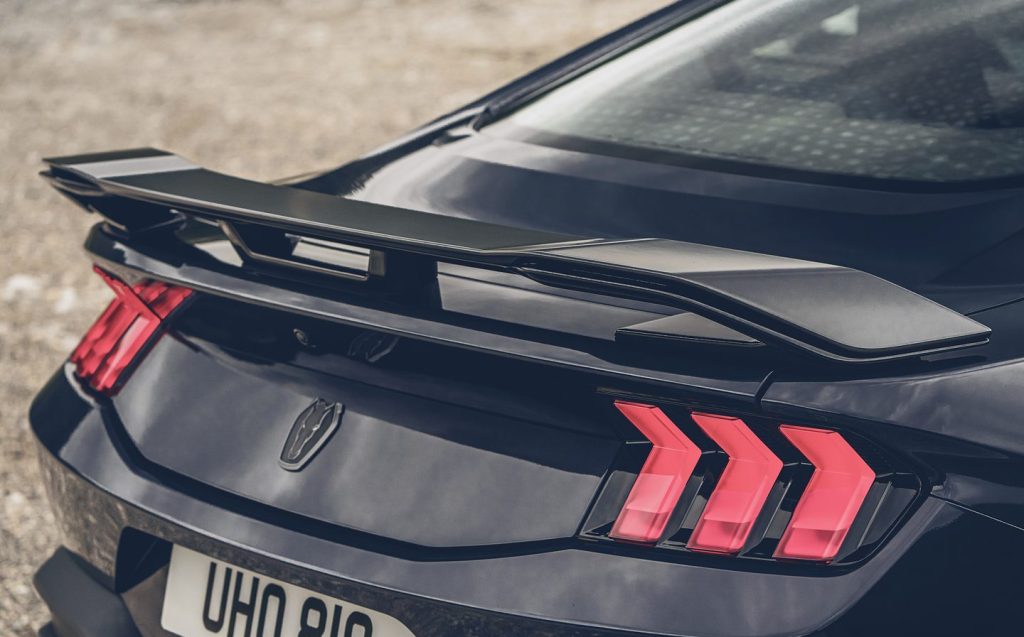
It hasn’t even put the prices up very much from the model it supersedes, so it remains (relatively) affordable Admittedly, when pushing £70,000 as a Dark Horse, we use the word “affordable” with as much trepidation as we can muster, but when a BMW M4 starts from more than £90,000, you can see the Ford is still something of a bargain.
Will that be enough to tempt Euro-savvy buyers from their Audi RS 5s or those pesky M4s? Well, that remains to be seen, but there’s more than enough about the fantastic new Ford Mustang Dark Horse to suggest it’s not just an outsider coming up on the rails; rather, it’s a front-running model you can safely bet on.
Related articles
- If you found our review of the new Ford Mustang Dark Horse interesting, you might be interested in Will Dron’s extended test in the Ford Mustang Mach-E
- Have a read of our review of the stunning Maserati MC20 Cielo
- You should check out the Pininfarina B95 open-topped electric hypercar, too
Latest articles
- Porsche 911 Carrera S 2025 review: Harder, better and faster – but is it the best 911?
- F1 2025 calendar and race reports: The new Formula One season as it happens
- Seven great automotive events to visit this summer, from F1 to art and champagne
- Watch new Porsche 911 GT3 smash Nürburgring record for manual cars
- Skoda Elroq 2025 review: Czech carmaker can’t seem to miss with its electric family cars
- Five best electric cars to buy in 2025
- Should I buy a diesel car in 2025?
- Zeekr 7X AWD 2025 review: A fast, spacious and high tech premium SUV — but someone call the chassis chief
- Denza Z9GT 2025 review: Flawed but sleek 1,062bhp shooting brake from BYD’s luxury arm









